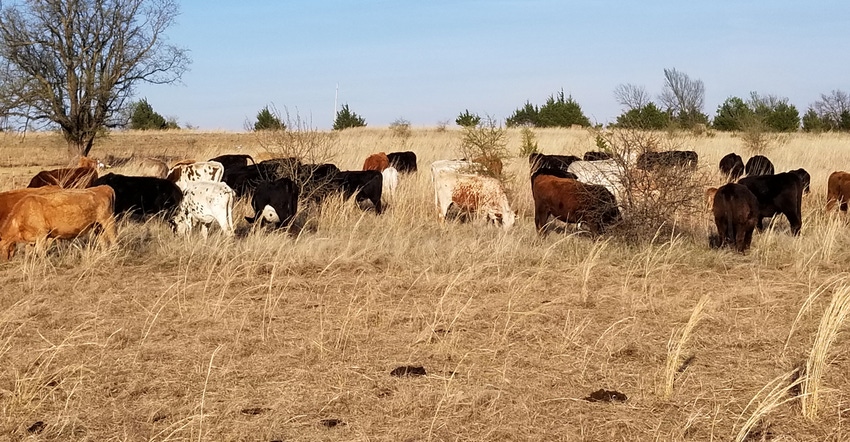
For more than two years, I have been working with ultra-high-density, nonselective grazing. It’s the most difficult type of grazing yet invented, and it has the highest productive reward.
In this presentation I did for the Farm Progress Virtual Experience, I describe what I am learning and what yet needs to be accomplished to get the fullest benefits from this technology.
However, I am already at triple stocking rate or a little above, and I am understocked most of the time, perhaps all the time.
Ultra-high-density grazing (UHDG) typically begins at 225,000 pounds of animals to the acre and goes up from there. Science is showing high stock density is the most rapid way to improve the land.
Nonselective grazing takes or tramples as close to all the forage as possible. It requires the cattle to eat much deeper into the forage, across more species, than we’ve typically thought customary or reasonable. Selective grazing allows them to select, whether under continuous grazing or some form of rotation. The stock density alone does not create selective or nonselective grazing. It is the consumptive requirement the manager puts on the cattle.
Why nonselective grazing
The reasons to use nonselective grazing along with UHDG are to rapidly increase the leaf-to-stem ratio of the forage plants, increase seedling establishment, increase palatable forages and obtain a more even harvest of all plants, decreasing the tendency of cattle to sort for the plants they like and leave behind the ones they don’t.
The primary difficulty in managing this type of system arises because the type of cattle that have been bred and are standard today are poorly suited to consuming and thriving on low-quality forage. Remember that nonselective grazing has much higher consumption and trampling than grazing at lower stock density. You can think of it somewhat like haying. It feeds the cattle an average of much lower-quality, less-digestible plant material than if they were grazing. If you’ve ever studied hay quality or research on grab samples versus fistulated samples for cattle forage quality, you’ll understand what this means.
These same demands and problems occur to a lesser degree with selective grazing and various types of rotational grazing, but UHDG with nonselective grazing takes this to a new level.
The solution requires a big shift in cattle type. Typically, research shows smaller cows are more efficient (and even can be more profitable in the feedlot), and this is codified in National Research Council data. However, my experience shows these smaller cows are highly variable.
Size alone isn’t the answer. The cattle need to have high relative intake, great hormonal balance and an ability to thrive on forage. Affordable and effective supplementation is also very important.
All these things are being worked out, or have been worked out, by producers across many continents, in very different habitats.
Ultimately, my goal and that of others using this management is to increase stocking rate many times over, build the soil and forage in quality and quantity, and have cows that perform well, rebreed on time, and produce a fast-growing and early-maturing calf. This produces high profitability.
Check out this breakout session from the Farm Progress Virtual Experience, “Ultra-High-Density Grazing.”
Newport is the editor of Beef Producer, a sister publication.
Read more about:
Farm Progress Virtual ExperienceAbout the Author(s)
You May Also Like




